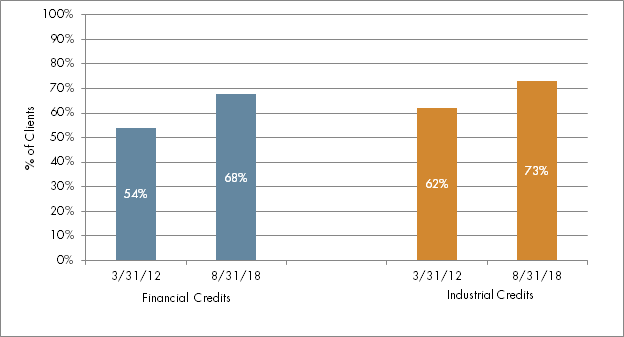Corporate Leverage: Par for the Course or Harbinger of an Upcoming Crisis?
20 min readDOWNLOAD FULL REPORT Abstract As the post-recession credit cycle matures and a period of historically low interest rates ends, investors are paying increased attention to the rise of corporate leverage. Companies have borrowed heavily in the past decade to fund M&A activity and investor payouts. This has resulted in significant growth in BBB-rated debt for…





